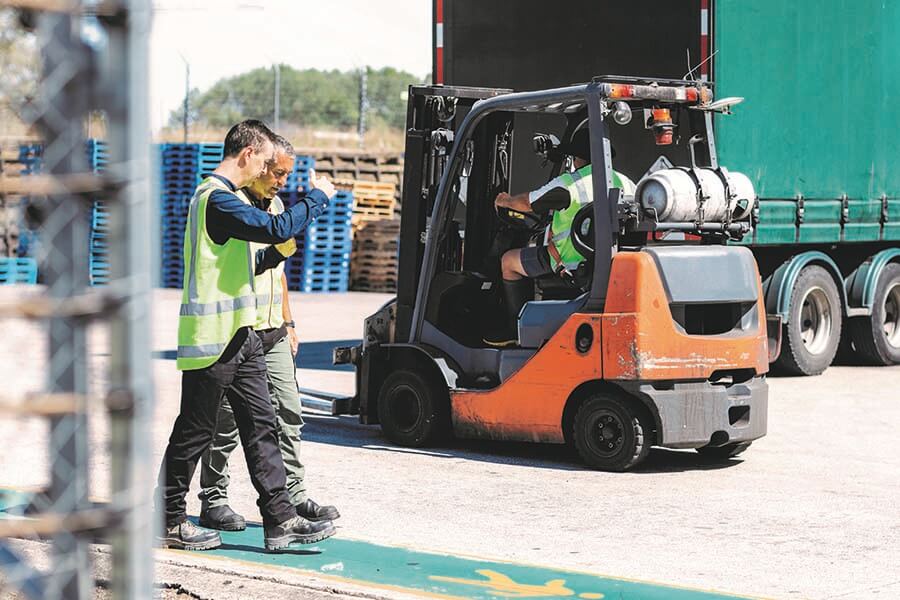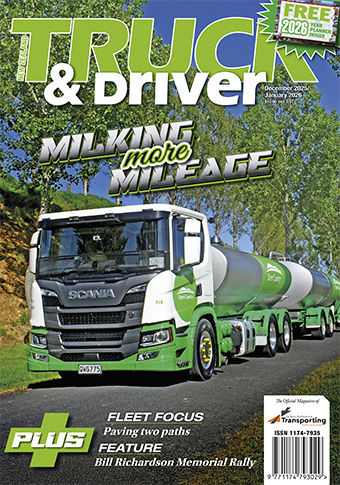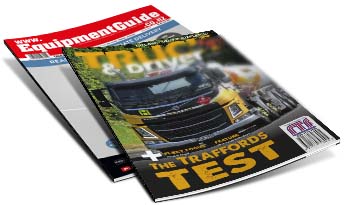Ia Ara Aotearoa Transporting New Zealand News


WorkSafe focuses on safety around vehicles
WorkSafe NZ is increasing its focus on the use of vehicles at work sites, in response to the large number of vehicle-related fatal and serious injury accidents occurring each year.
Two new pieces of guidance for PCBUs (persons conducting a business or undertaking) in managing vehicle and worksite safety have been released – covering seatbelts at work and site traffic management.
This is important information for all transport operators and RTF has picked out some of the key points. More information, including the complete guidelines are available at www.worksafe.govt.nz
Seatbelts at work
Workers should wear seatbelts whenever they are using vehicles or mobile plant for work, and there is a seatbelt available. Transport operators are reminded to promote and monitor the use of seatbelts by their workers. There are a number of ways you can do this:
...WorkSafe NZ is increasing its focus on the use of vehicles at work sites, in response to the large number of vehicle-related fatal and serious injury accidents occurring each year.
Two new pieces of guidance for PCBUs (persons conducting a business or undertaking) in managing vehicle and worksite safety have been released – covering seatbelts at work and site traffic management.
This is important information for all transport operators and RTF has picked out some of the key points. More information, including the complete guidelines are available at www.worksafe.govt.nz
Seatbelts at work
Workers should wear seatbelts whenever they are using vehicles or mobile plant for work, and there is a seatbelt available. Transport operators are reminded to promote and monitor the use of seatbelts by their workers. There are a number of ways you can do this:
• Encourage workers to look out for each other by reminding each other to use a seatbelt.
• Use brightly coloured seatbelts, so it is easier to see when they are being worn.
• Install semi-rigid buckles that sit up from the driver’s seat – getting in the way of the worker until they buckle them. In-cab cameras can be used to monitor seatbelt use too.
• Stress the importance of wearing seatbelts at all times and provide training on how to wear them correctly. Consult and work with staff to overcome any issues they may have with wearing seatbelts.
• Include a seatbelt-wearing policy in your business’ health and safety documents and worker training resources.
Ensure seatbelts and any approved seatbelt modifications are in good working order. Checking the seatbelt should be part of the daily safety check.
Managing work site traffic
Businesses have a duty to keep people safe around vehicles and mobile plant at work sites. This includes when entering and exiting a work site. Good practice guidelines include the following:
• Working together with other PCBUs where more than one business shares a work site. The PCBUs must work together to manage the risks related to work site traffic, and must consult with their workers when deciding how to manage the risks related to work site traffic.
• Risk management: Hazards must be identified and a risk assessment carried out for each. All reasonably practicable actions must be taken to eliminate or minimise the risks that have been identified.
• Safe work site design: A well-planned and designed work site can reduce the risks to people working near work site traffic. The most effective way of ensuring pedestrians and vehicles can move safely around a work site is to provide separate pedestrian and vehicle traffic routes.
• Plan vehicle routes: Ideally work sites should have a one-way system with separate entry and exit points. This removes the need for vehicles to reverse.
• Keep vehicle routes clear of known hazard areas: Avoid putting vehicle routes and parking areas near designated hazardous substance storage areas.
• Avoid vehicle routes that cross public parking and pedestrian areas: Where relevant, work site traffic should have separate entry and exit points from the general public.
• Have dedicated parking areas: Parking for workers, visitors, trucks and other vehicles should be located away from busy work areas and traffic routes. Walkways leading to and from parking areas should be separated from vehicles and vehicle routes.
• Provide good visibility and lighting: Work sites should be designed so drivers and pedestrians can always see each other clearly.
• Clearly identify traffic and activity zones: Areas designated for certain activities should be clearly marked using signs, colour-coded road or floor markings and barriers.
• Speed: Reducing vehicle speed is an important part of work site vehicle safety. Speed limits should be based on the individual circumstances of your work site but should remain within industry-accepted levels (for example, 10km/h in trucking yards and 30km/h on farms).
• Coupling and uncoupling: Coupling and uncoupling should be done in a designated area that is well lit, has a firm and level surface that is suitable for the tare of the trailer and truck. Trailer swaps should be done in designated truck stop areas, away from busy roads and with good lighting.
• Loading and unloading: To minimise the risks to workers involved in loading and unloading vehicles, information should be provided on the nature of the load and how it should be properly loaded, secured and unloaded. All loads and load restraint methods should follow the NZ Transport Agency Truck Loading Code.
• Driver waiting areas: There should be a safe place where drivers can wait throughout loading and unloading.
Please visit www.worksafe.govt.nz for more information.



 + EQUIPMENT GUIDE - FREE
+ EQUIPMENT GUIDE - FREE
